Whether you’re thinking of adopting or have just adopted a pet rabbit, you’re likely curious about their sleeping habits. You’ve landed in the right place if you’ve never seen a sleeping bunny, as this guide covers everything there is to know for rabbit owners — from when rabbits sleep to how many times they nap.
Rabbits love a good snooze. You can’t help but swoon when watching them peacefully nod off. This might be the cutest thing ever, but it’s not just for show, and our bun-buns benefit from sufficient sleep just as we do.
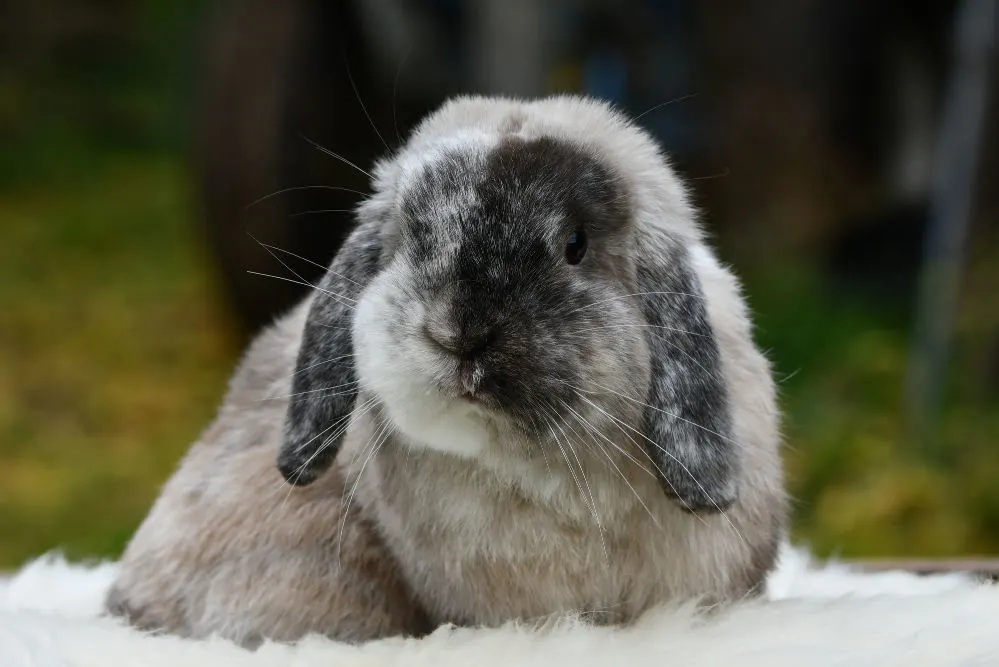
However, there are significant differences between our sleeping patterns and a rabbit’s, and it can be confusing to figure theirs out. This post aims to squash any confusion and make you a better bunny parent. So keep on reading.
Read Next: Check out this in-depth guide on what rabbit poop looks like.
When and what time do rabbits sleep?
The main thing to know is that rabbits are usually crepuscular, meaning they are primarily active at dawn and dusk. There’s an emphasis on ‘usual’ as rabbits can sometimes become predominantly diurnal animals if exposed to long periods of noise and scheduled feeding during the day.
Unlike nocturnal animals, a diurnal animal is most active in the daytime. With that said, this doesn’t mean your rabbit automatically adapts to your lifestyle, as this process takes time. Your rabbit is still likely to spend the majority of the day sleeping, unlike other pets.
Rabbits need this “reverse” sleep cycle to prepare for the busy night ahead. They are most active around 20:00, so keep this in mind if you’re getting an indoor rabbit.
While it’s normal to catch them being active here and there throughout the day, it doesn’t mean they’ve fully adapted to your sleeping pattern, as they tend to snooze periodically.

You just have to allow your rabbit the room to sleep when they feel like it, as their sleeping habits also depend on their mood. However, if you share a small space with your rabbit and they keep you up, fret not! There are ways to train your pet bunnies to sleep more at night (more on this later).
It’s normal to see your bunnies still active when you wake up early. However, they start getting into sleep mode in the late morning between 09:00 and 11:00. So very early morning and early evening would make excellent times for playdates with your pet bunny, while the middle of the day is when you can expect to see very little of them.
As dusk starts to set in is when you start seeing them crawl back to life from their much-needed slumbers.
How many hours does a bunny sleep?
On average, your rabbit needs about six to eight hours of sleep to function well. That’s only the amount of sleep they need, though. Rabbits can keep a shut eye for up to 14 hours a day.
These little day-sleepers average around 11 hours of snoozing, with their sleep cycles including drowsy, slow-wave, and rem sleep.
Fun fact: Your rabbit dreams during the rapid eye movement sleep, and you’ll see their little feet twitching in response to whatever’s happening in their deep sleep dreaming.
As mentioned before, they don’t sleep for 11 hours straight. They’ll do so in short bursts that add up at the end of the day.
How do rabbits sleep?
The positions in which a rabbit sleeps can tell you a lot about their personality and health. Here are the main sleeping positions you can expect:
Superman position
The main sleeping position for a rabbit is on its tummy with its back legs stretched out or sideways. What could this odd (and adorable) position mean? It means your rabbit is comfortable, feels secure, and could be in this position to help cool off in hot weather.
The loaf position
The loaf position means that your bunny tucks its legs underneath, usually with relaxed ears and a drooped head. They sort of look squished up and resemble a loaf of bread in this position (hence the name).
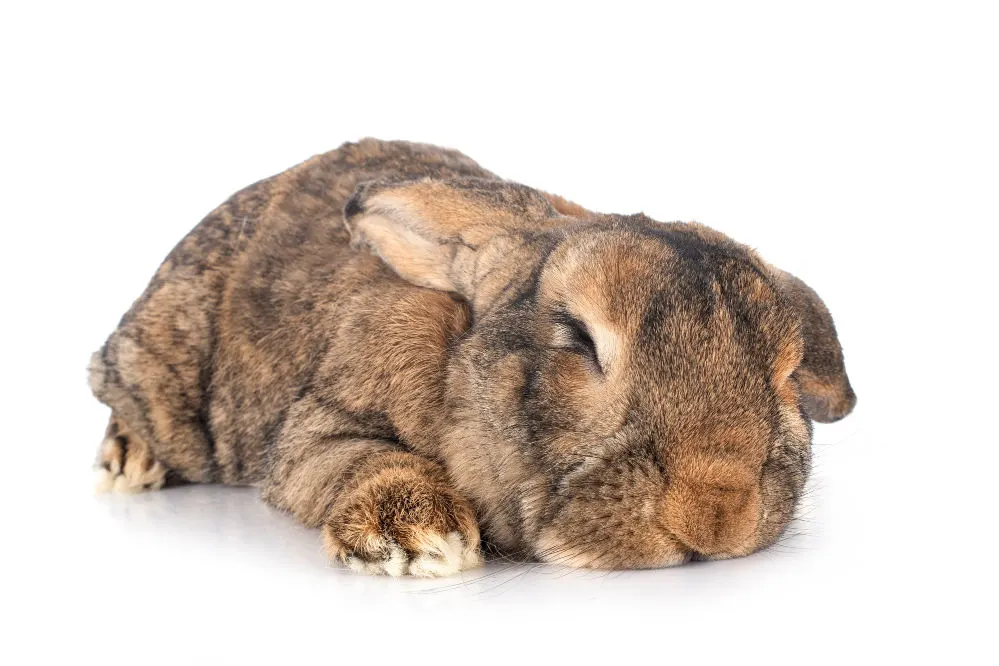
Rabbits sleep in this position to feel safe and comfortable against any form of danger, so they can spring up quickly in case of a threat. This position also allows them to conserve body heat.
Sleeping with open eyes
Rabbits sleep with their eyes open while still on alert, but they’ll often shut their peepers when feeling safe and secure with their surroundings. As a prey animal, it’s in their nature to be on the lookout for predators even when sleeping.
Dead bunny flop
Don’t worry. This is not what it sounds like. In fact, when you see your bun in this position, it simply means they’re perfectly content and feel safe. The dead bunny flop is when your rabbit sleeps on one side with their limbs stretched out.
This is when they are at their most vulnerable and relaxed, so if you find them in this position, you’ve done a great job of making them feel at ease.
Sphinx position
A rabbit gets into a “sphinx” position when they’re not really planning to fall asleep. Instead, this would just mean a quick nap for them. While in this position, their muscles are tense and contracted, preventing them from falling into a deep sleep.
They do this when they’re still full of energy and don’t really want to sleep, so they can get up quickly when needed. So essentially, they’re just resting but still in the mood to play.
Back-to-back
If you have more than one bun, you’ll often find them sleeping in the back-to-back position. Wild rabbits do this to huddle together for warmth and protection. Your house bunny might sleep like this next to you or their sibling for a hearty bonding session.
And if you find them sleeping on top of you while holding them, they’re showing you some extra TLC (awww).
How to know if your bunny is actually sleeping
This one’s pretty straightforward: look at their ears and nose. Ears folded down on their head are a clear sign that they’ve entered snoozeville. In contrast, a fast twitching nose indicates that your rabbit is awake and alert.
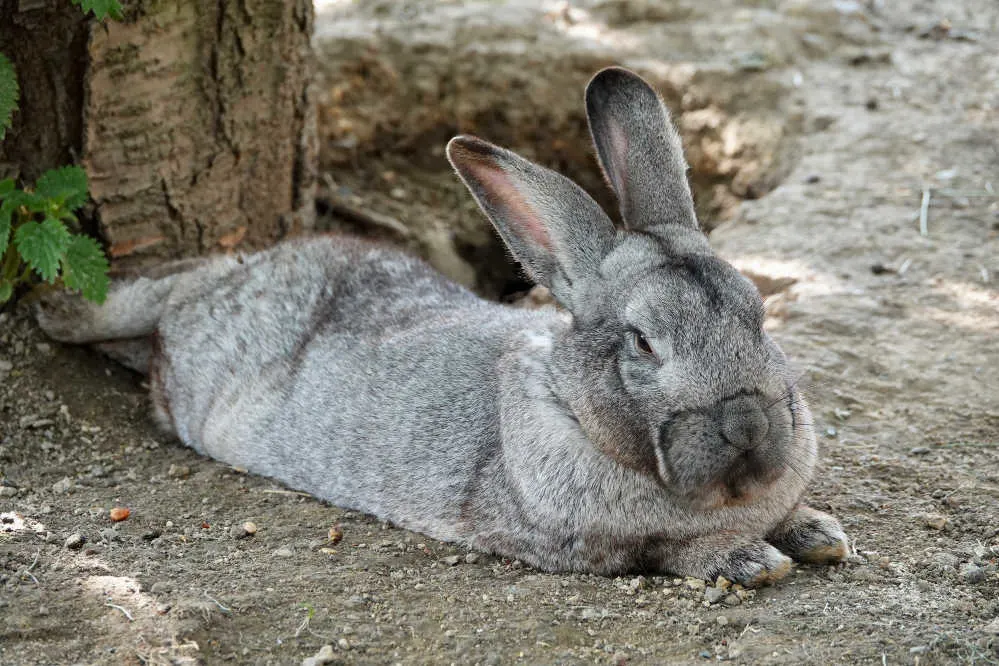
Sometimes they’ll sleep upright, which can be confusing. Again, look at your rabbit’s nose or ears to be certain.
Do baby bunnies sleep more?
Baby bunnies are daytime sleepers averaging 6–8 hours of the z’s per day, which means that kits tend to sleep less than adult rabbits. That’s because kits want to play and eat much more, just like puppies and kittens.
How are wild rabbits’ sleeping habits?
Both wild and domestic rabbits are more active at dawn and dusk. The noticeable difference is that domesticated rabbits can be trained to adjust to your sleeping schedule, because they feel safe.
Tip: This guide will clue you in on all the different breeds of rabbits that currently exist.
How to help establish a healthy sleep schedule
Disrupting your fluffy bun’s beauty sleep is a big no. Here are some things you can do to help them sleep better. To ensure your bunny gets enough sleep, you can create a safe and quiet environment with cozy bedding. Let’s have a closer look:
The ideal environment for bunny’s sleep time
If you decide to home a bunny, it’s essential you have a secure, quiet, and clean environment. Give your pet a darkened, sheltered, and well-ventilated area to sleep in. This will create the ideal ambiance for peaceful sleep.
Ideal bedding for sleeping rabbits
Rabbits love sleeping on soft and comfortable items like blankets and pillows. However, good quality soft straw may be the better option. It’s actually the perfect bedding for rabbits, especially for outdoor bunnies.
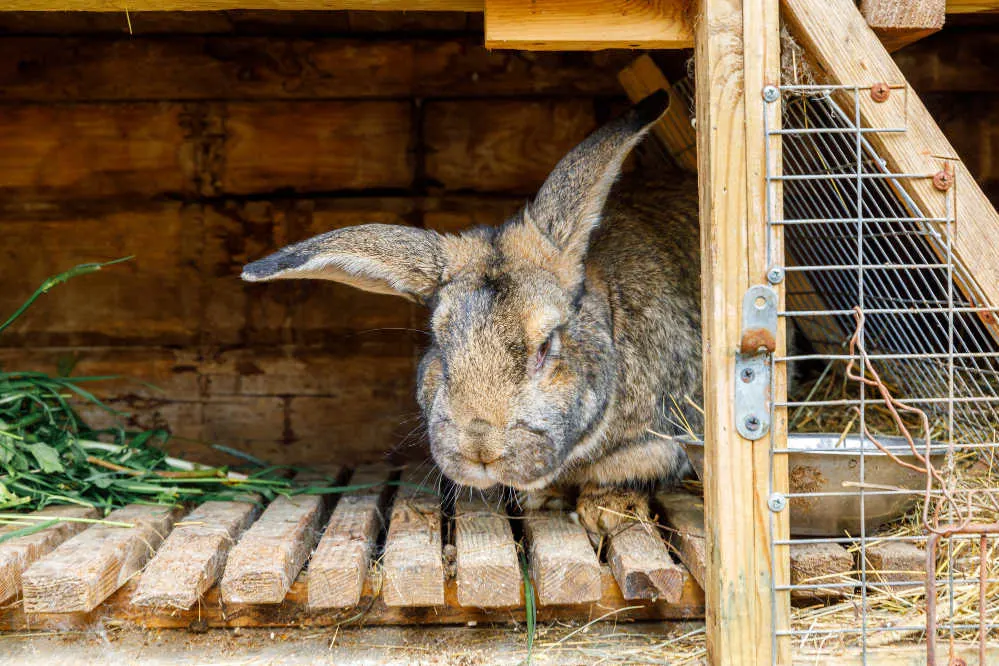
It’s warm, cozy, and absorbent, so your fluffball should be able to fall asleep in a minute. Blankets or pillows can be too warm for them or even toxic if they start to eat them.
How to make a rabbit sleep more at night
As a rabbit owner, you must brace yourself for sleepless nights, especially in the beginning. It’s the small warning (that no one tells you about) that comes with these adorable fluff balls.
However, there are ways to train your furry friends to adapt more to your sleep schedule. This will mostly apply to indoor bunnies, so if your pet lives in an outdoor hutch, they probably won’t wake you up in the middle of the night.
Psst: Find out more about rabbit house ideas right here.
Here are a few techniques to encourage your rabbit to sleep more at night:
- Switch off all the lights before bedtime and ensure that no light enters your bunny’s sleeping area. Rabbits are sensitive to light and sleep far better in dark environments which allows their brain to release the sleep hormone.
- Incorporate lots of hay into their diet. Providing ample soft, fine hay to your bun will keep them occupied at night as they chew away. This food source also helps fight gastrointestinal issues, which can disrupt sleep.
- Keep your rabbit busy with food and activities during the day. This one is self-explanatory, make sure your bunny doesn’t get bored and start snoozing throughout the day.
- Rabbits are notoriously light sleepers, so make sure there’s absolutely no noise near your rabbit’s cage — their cute ears pick up on the softest sounds.
- Ensure your bun has quiet toys to chew on at night.
When Do Rabbits Sleep – Wrapped Up
Now you know exactly about the sleep habits of rabbits; from sleeping positions to times and how to make them sleep according to your routine. While no two bunnies are the same, it’s safe to say that we’ve figured out their bizarre sleeping pattern.
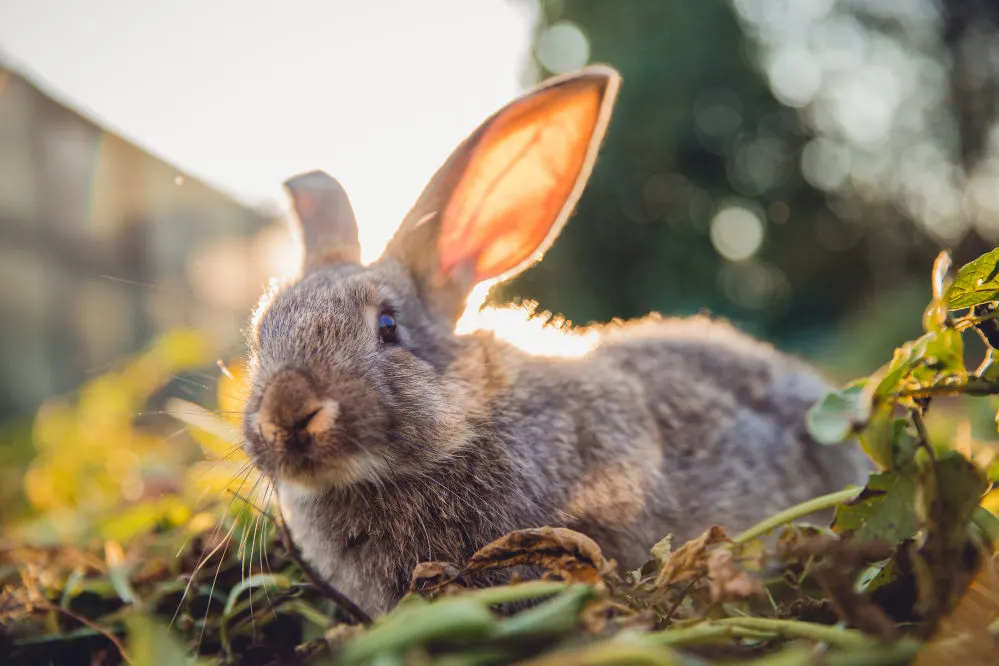
The takeaway is that these feisty little creatures tend to sleep in short periods through most of the day for up to 11-14 hours.
Next Up: Adopting a flemish rabbit? Here’s how big a giant flemish rabbit gets.
Steph Dyson is a travel journalist by trade but a lover of all small pets. She’s been a pet mum to everything from gerbils to guinea pigs, rabbits to hamsters, and fish to dogs of all shapes and sizes. She wants to share her years of experience with small pets and make Small Pet Guides the go-to website for pet owners seeking information and care advice.

